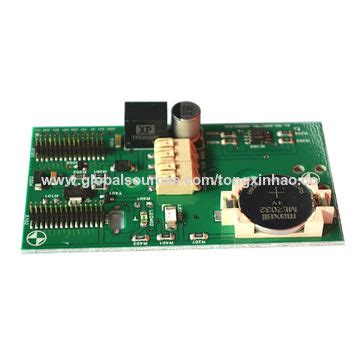The Essential Guide to PCB Technical Support: Ensuring Optimal Performance and Reliability
Introduction
Printed Circuit Boards (PCBs) are the backbone of modern electronics, serving as the foundation for nearly all electronic devices, from smartphones to industrial machinery. As PCB designs become more complex, the need for robust PCB technical support has grown significantly. Technical support ensures that PCB designs are manufacturable, reliable, and meet performance requirements.
This article explores the key aspects of PCB technical support, including design validation, troubleshooting, manufacturing assistance, and best practices for ensuring high-quality PCB production.
1. The Role of PCB Technical Support
PCB technical support encompasses a range of services aimed at assisting engineers, designers, and manufacturers in developing and producing high-quality PCBs. Key responsibilities include:
1.1 Design Review and Validation
Before a PCB goes into production, technical support teams review the design for potential issues, such as:
- Signal integrity problems (impedance mismatches, crosstalk)
- Power delivery issues (insufficient power planes, voltage drops)
- Thermal management concerns (overheating components)
- Manufacturability challenges (minimum trace width, drill hole sizes)
Tools like Design for Manufacturability (DFM) checks and simulation software help identify and resolve these issues early.
1.2 Material Selection Guidance
Choosing the right PCB materials is critical for performance and reliability. Technical support helps select:
- Substrate materials (FR-4, Rogers, polyimide)
- Copper weight and finish (ENIG, HASL, immersion silver)
- High-frequency materials for RF and microwave applications
1.3 Troubleshooting and Failure Analysis
When PCBs fail, technical support teams diagnose issues such as:
- Short circuits and open traces
- Component failures (solder joint cracks, overheating)
- Signal integrity degradation
- Environmental stress failures (humidity, thermal cycling)
Techniques like X-ray inspection, thermal imaging, and electrical testing help pinpoint defects.

2. Common PCB Issues and Technical Support Solutions
2.1 Manufacturing Defects
Common PCB manufacturing defects include:
- Poor solder joints (cold solder, bridging)
- Misaligned layers (registration errors)
- Insufficient etching (traces too thin or broken)
Solution:
- Automated Optical Inspection (AOI) detects assembly defects.
- Electrical testing (flying probe, bed-of-nails) verifies connectivity.
- Process optimization ensures consistent production quality.
2.2 Signal Integrity and EMI Issues
High-speed PCBs often suffer from:
- Signal reflections (due to impedance mismatches)
- Electromagnetic interference (EMI) (crosstalk, radiated noise)
Solution:
- Impedance-controlled routing (using simulation tools)
- Proper grounding techniques (split planes, stitching vias)
- Shielding and filtering (ferrite beads, EMI gaskets)
2.3 Thermal Management Problems
Overheating can lead to premature PCB failure. Common causes:
- Inadequate heat sinking
- High-power components without thermal relief
- Poor airflow in enclosures
Solution:
- Thermal vias and heatsinks improve heat dissipation.
- Simulation tools (like Ansys Icepak) predict thermal performance.
- Material selection (high-Tg laminates, metal-core PCBs)

3. Best Practices for Effective PCB Technical Support
3.1 Early Engagement in the Design Phase
Involving technical support early helps prevent costly redesigns. Key steps include:
- Schematic review for component compatibility.
- Layout optimization for manufacturability.
- Prototype testing before mass production.
3.2 Collaboration Between Designers and Manufacturers
Close communication between PCB designers and manufacturers ensures:
- Clear design specifications (tolerances, material requirements).
- Timely feedback on potential issues.
- Faster turnaround times for prototypes and production.
3.3 Continuous Training and Knowledge Sharing
Since PCB technology evolves rapidly, technical support teams must stay updated on:
- New materials and fabrication techniques.
- Advanced testing methodologies.
- Industry standards (IPC-A-600, IPC-7351).
4. The Future of PCB Technical Support
Emerging trends shaping PCB technical support include:
4.1 AI and Machine Learning for Defect Detection
AI-powered inspection systems can identify defects faster than manual methods, reducing production errors.
4.2 Advanced Simulation Tools
Next-gen simulation software predicts signal integrity, thermal behavior, and mechanical stress more accurately.
4.3 IoT and Smart Manufacturing
IoT-enabled PCB production lines allow real-time monitoring, improving yield and reducing downtime.
4.4 Sustainable PCB Manufacturing
Technical support is increasingly focused on:
- Lead-free soldering and RoHS compliance.
- Recycling and eco-friendly materials.

Conclusion
Effective PCB technical support is essential for producing reliable, high-performance circuit boards. By addressing design flaws, manufacturing challenges, and performance issues early, technical support teams help engineers avoid costly mistakes and delays.
As PCB technology advances, the role of technical support will expand, incorporating AI, advanced simulations, and smart manufacturing techniques. Companies that invest in strong PCB technical support will gain a competitive edge in delivering cutting-edge electronics.
By following best practices—early design involvement, collaboration, and continuous learning—PCB professionals can ensure their designs meet the highest standards of quality and reliability.







